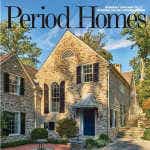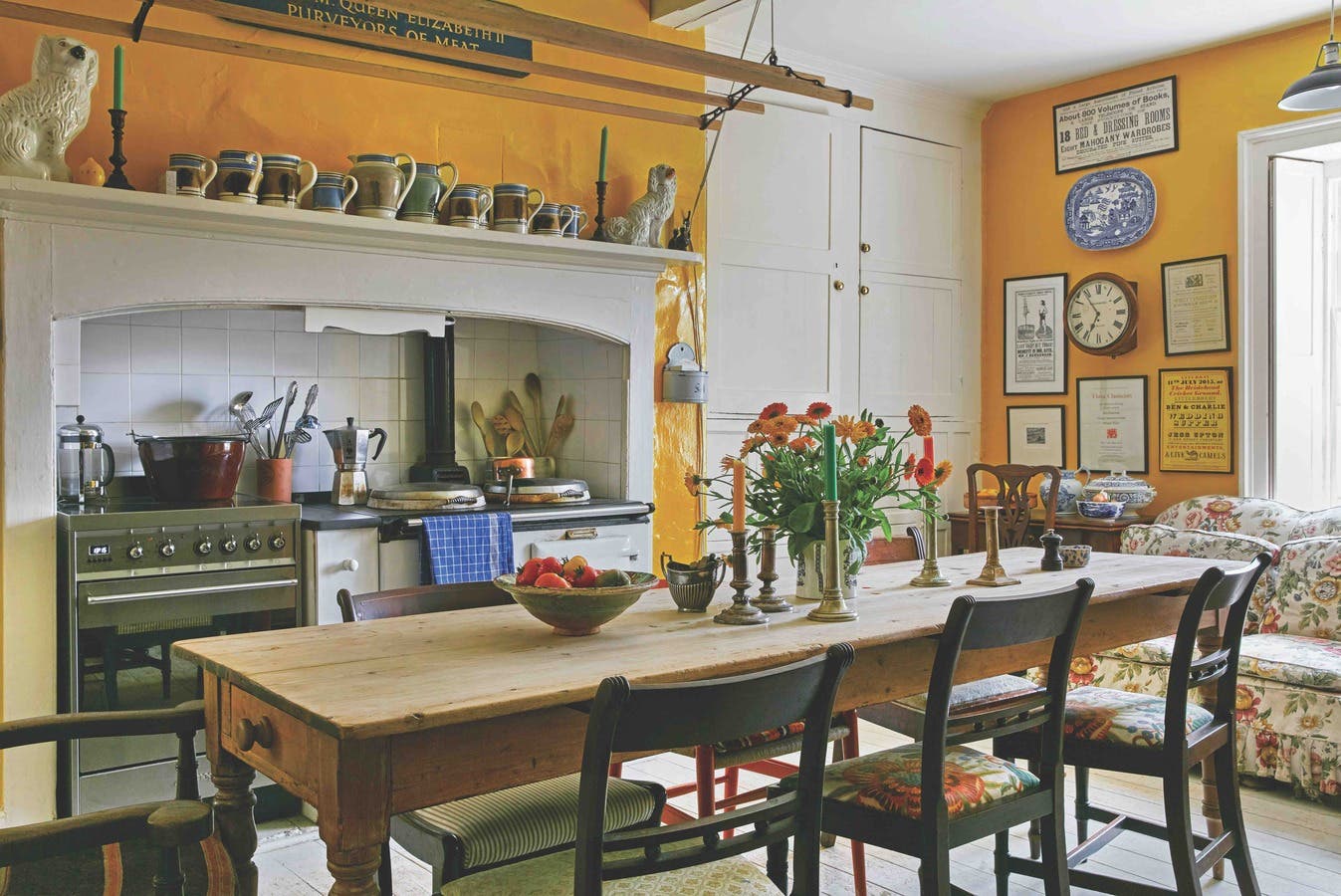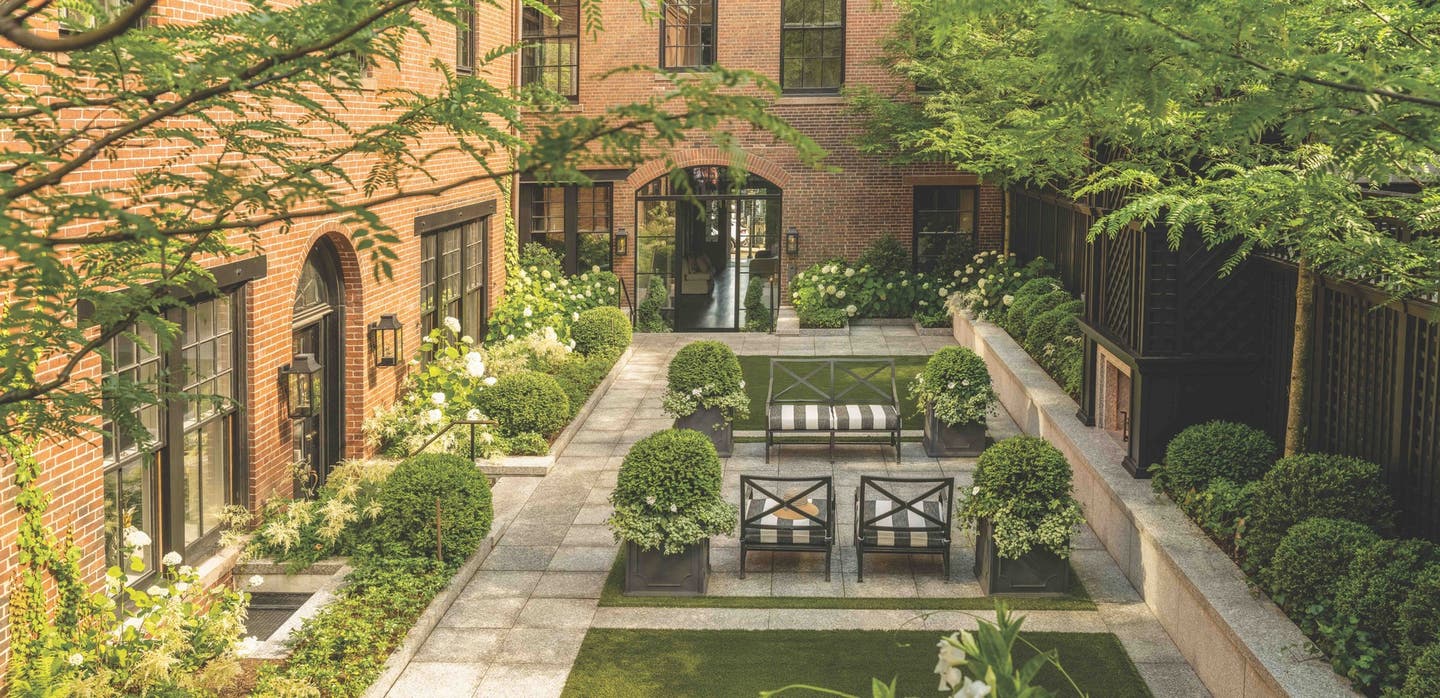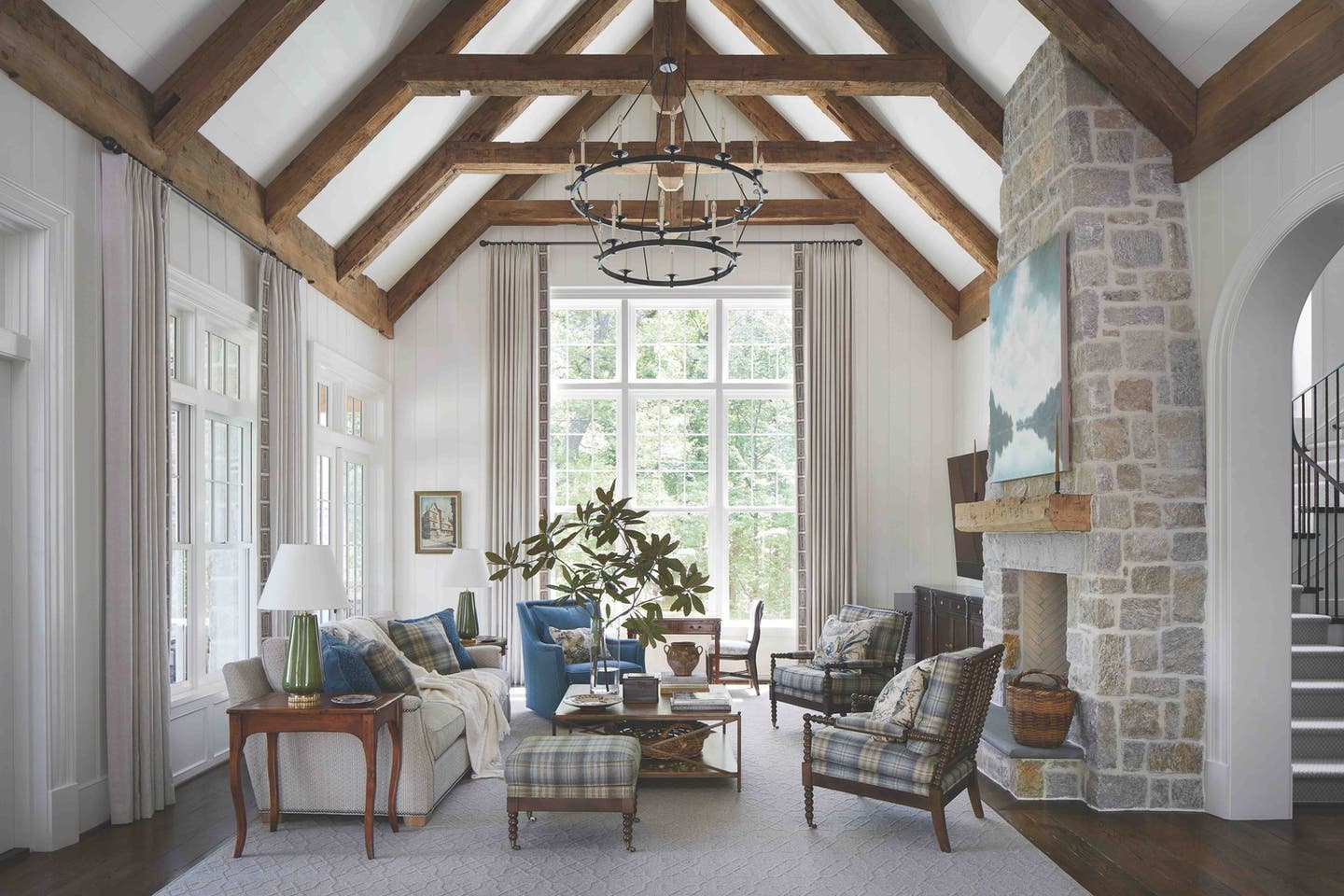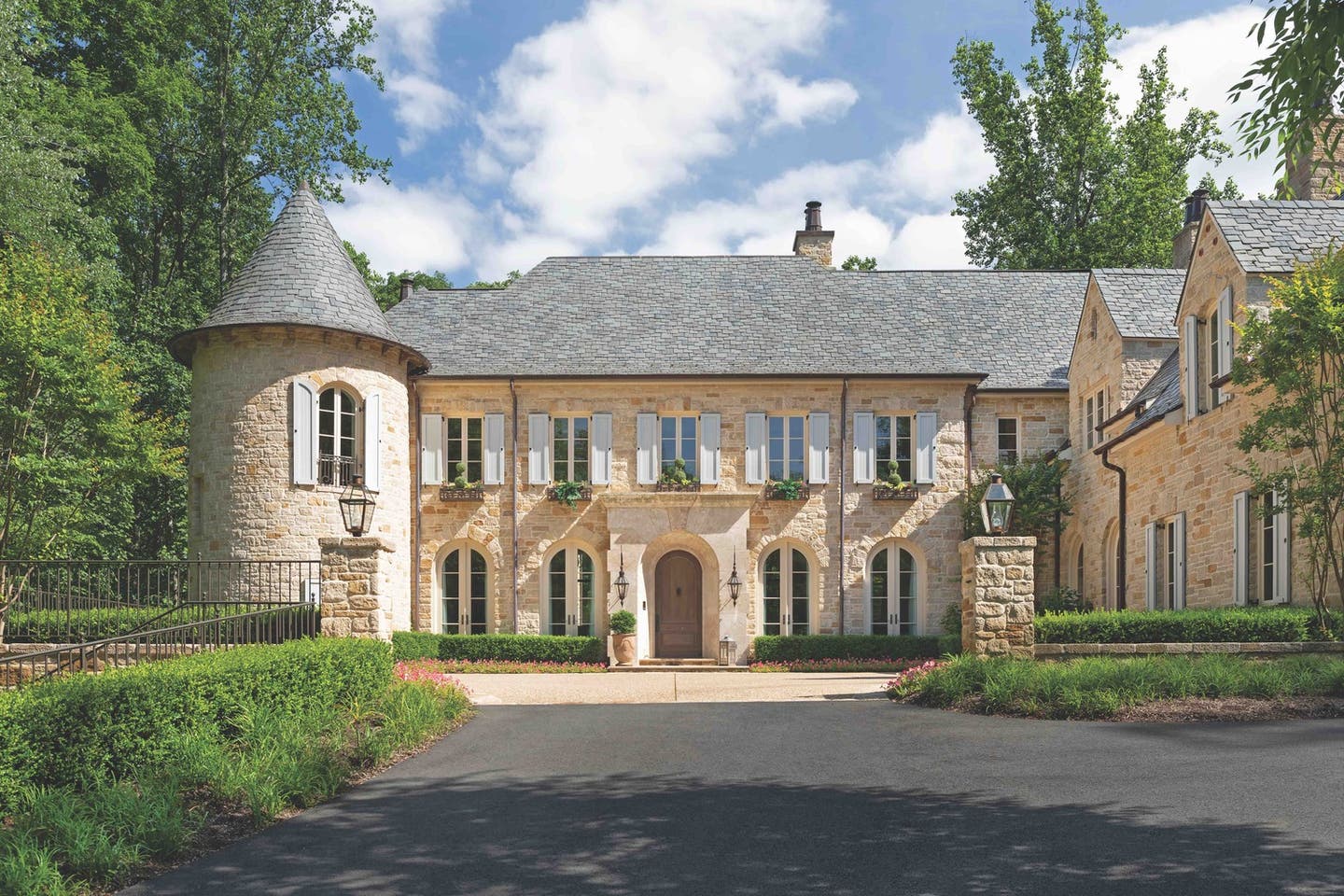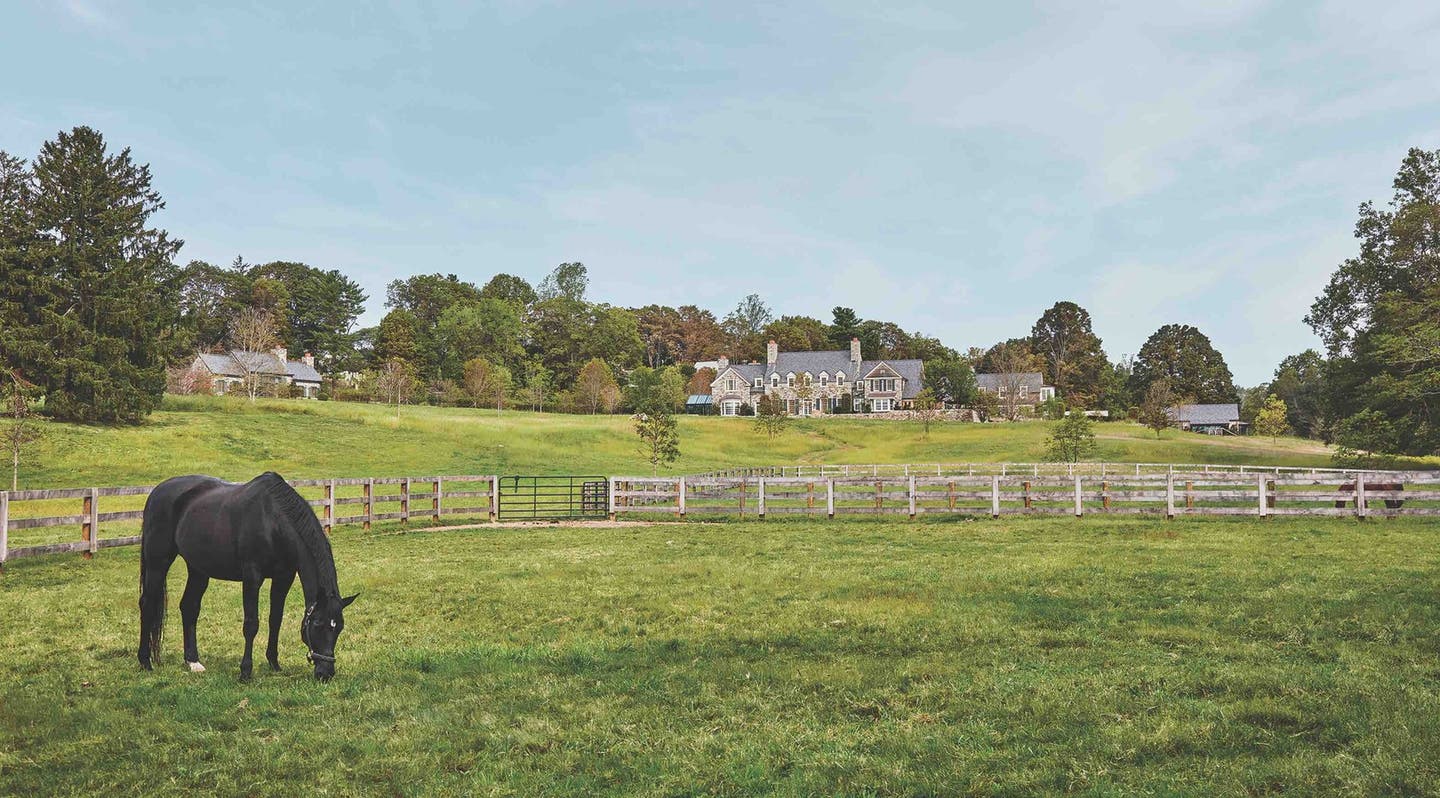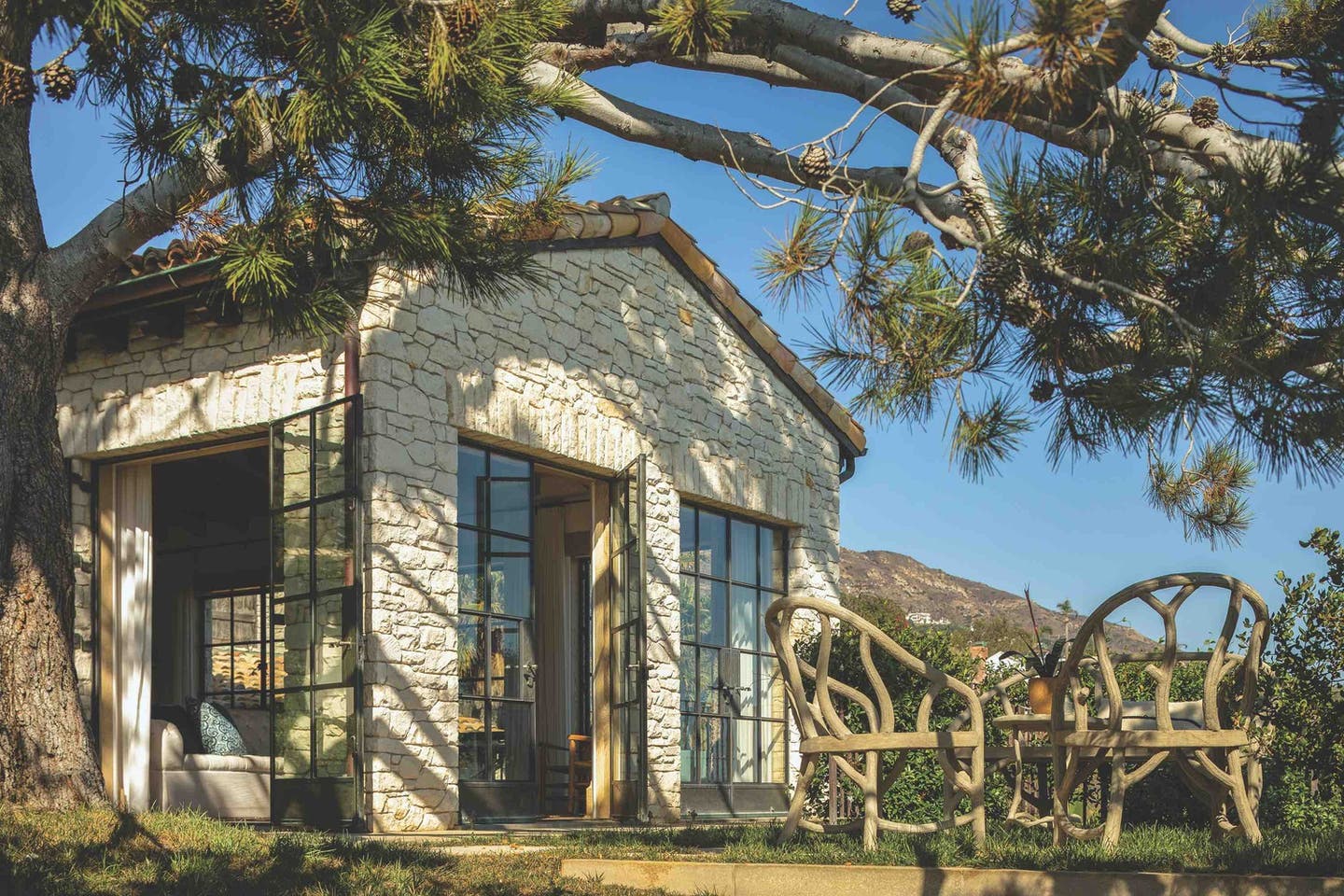
Projects
Charles Hilton’s French Normandy Manor House
Project: French Normandy Manor
Architect: Charles Hilton
While the finished product looks deceptively simple, bricklaying is a fine art, a skill that demands precision at every turn. Imagine the masons’ confusion, then, when architect Charles Hilton stopped by a worksite of his one day and said to the craftsmen: “Throw away your transits, your plumb lines, your pointing. Just do it by eye.” His encouragement of a free-style approach got the architect just the result he was after: more than 200 half-timbered bays in-filled with brick laid so randomly that no two patterns are alike.
Over his 40-year career, Hilton has put much thought into classical architecture’s role in the modern world. He is a stickler for getting even the smallest details right, no matter what genre he’s building in. But for this project, a French Normandy manor house in Greenwich, Connecticut, the definition of “right” was sometimes counterintuitive. “It didn’t look rustic enough,” says Hilton. “In the old days, they weren’t doing all that stuff to lay the bricks straight.”
Between the 15th and 17th centuries, in the Normandy region of France, the rural vernacular was expressed by post-and-beam dwellings clad in brick, stone, stucco, shingle, or any combination thereof. Decorative half-timbering on a portion of the façade was ubiquitous, and other features included multi-pane windows, dormers with hip or shed roofs, and plank-like entry doors with large decorative wrought-iron hinges. Barns were attached to the living quarters, and there was a central tower for the storage of grain or silage, usually cylindrical but in some instances square or octagonal.
The French manor house, a revival style that harkens back to medieval European architecture, inspired Hilton, whose charge was to design a residence on a 13-acre property where for over the span of two decades he had left his mark on a variety of projects—a Georgian house, a gazebo, a pool house, a tool shed and other service buildings, all complemented by landscape architect Charles J. Stick’s magnificent gardens, orchards, and berry fields appointed with sculptures and follies. But it wasn’t until a trip to France brought him to the Hameau de la Reine at Versailles that his stylistic hunch for the house in Greenwich was affirmed. “I loved the scale of the structures, the earthiness and tactile sense of the materials, and the playfulness of the designs,” says Hilton. Built for Marie Antoinette in 1783, the Petite Hamlet so captivated the architect that he snapped hundreds of photos and once home announced to the homeowner, “I’ve found our aesthetic direction.”
“It was really appropriate for the agrarian feel we were trying to create,” says Hilton, explaining that his clients (husband and wife are both avid gardeners and cooks) dreamed of having their own organic farm. “We used brick, slate, and stone, which were the materials we used on the main [Georgian] estate, so there was a tie to the materials used earlier, making it stylistically compatible but distinct.” In contrast to the Georgian dwelling, the French Norman building, referred to as the Barn, is less formal in structure and uses more casual materials.
“Once we selected the architectural direction, we tried to stay fairly pure to that inspiration,” says Hilton, “but we have to build for our local climate and to meet today’s codes.” So, for example, whereas an authentic French Normandy house would have been built with native beige limestone, they used Connecticut fieldstone, knowing that limestone wouldn’t hold up well in the New England weather. To get one particular effect they wanted without using French limestone, “We had an off-white granite carved for the front door surround and some other accents,” notes Hilton. Additionally, fieldstone for the base matches the stonewalls on the property, a vernacular treatment. In lieu of authentic oak windows from France that were beautiful but lacked proper weather-stripping and screens, the architect turned to Artistic Doors and Windows in New Jersey, who replicated the casements based on a traditional French knuckle design, customizing them in a way that was true to the period and style of the house. To get the right, period-appropriate colors, sizes, and shapes for the Roman brick nogging, Hilton commissioned custom bricks from Ludowici, who typically produce terra cotta roofing tiles.
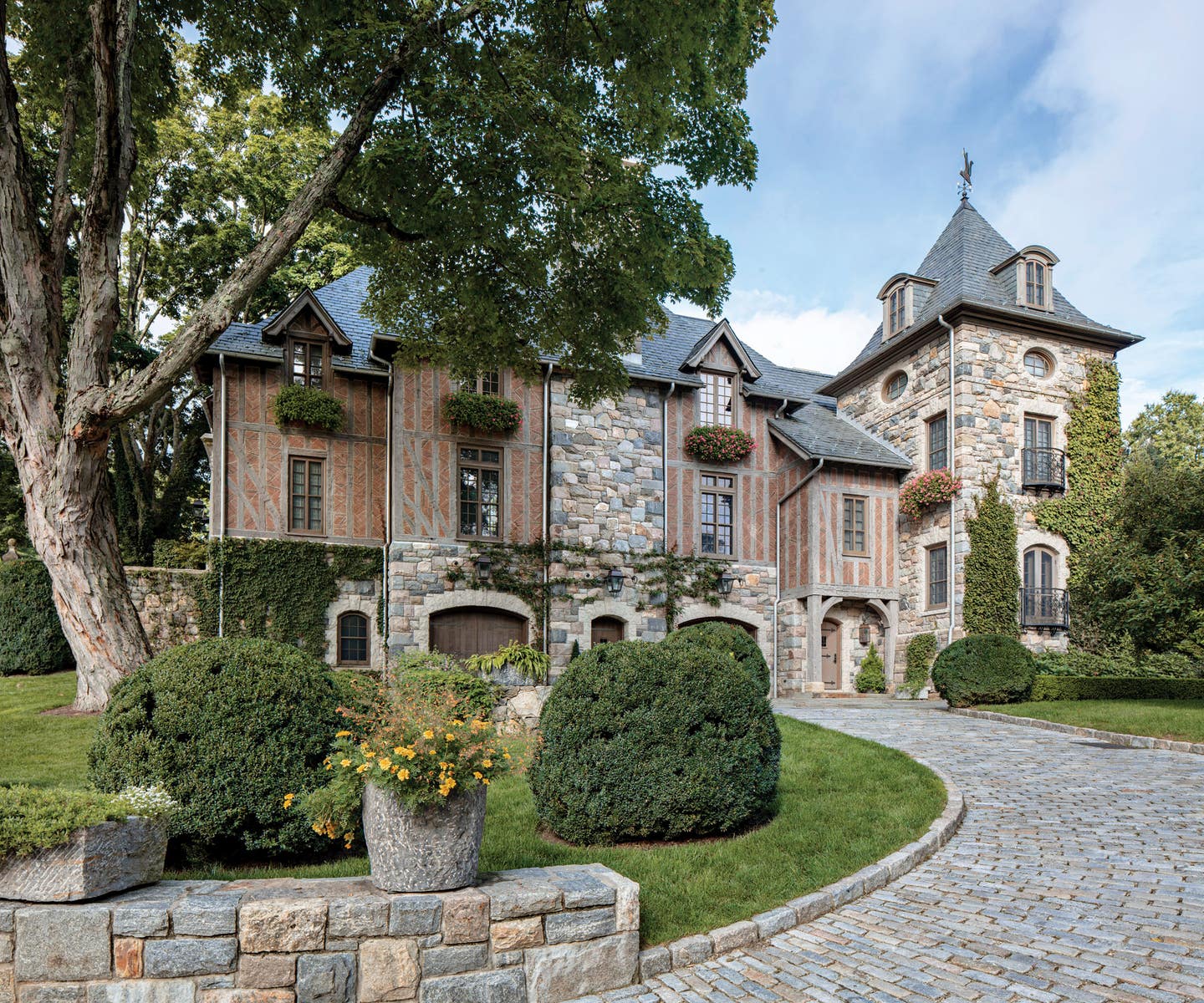
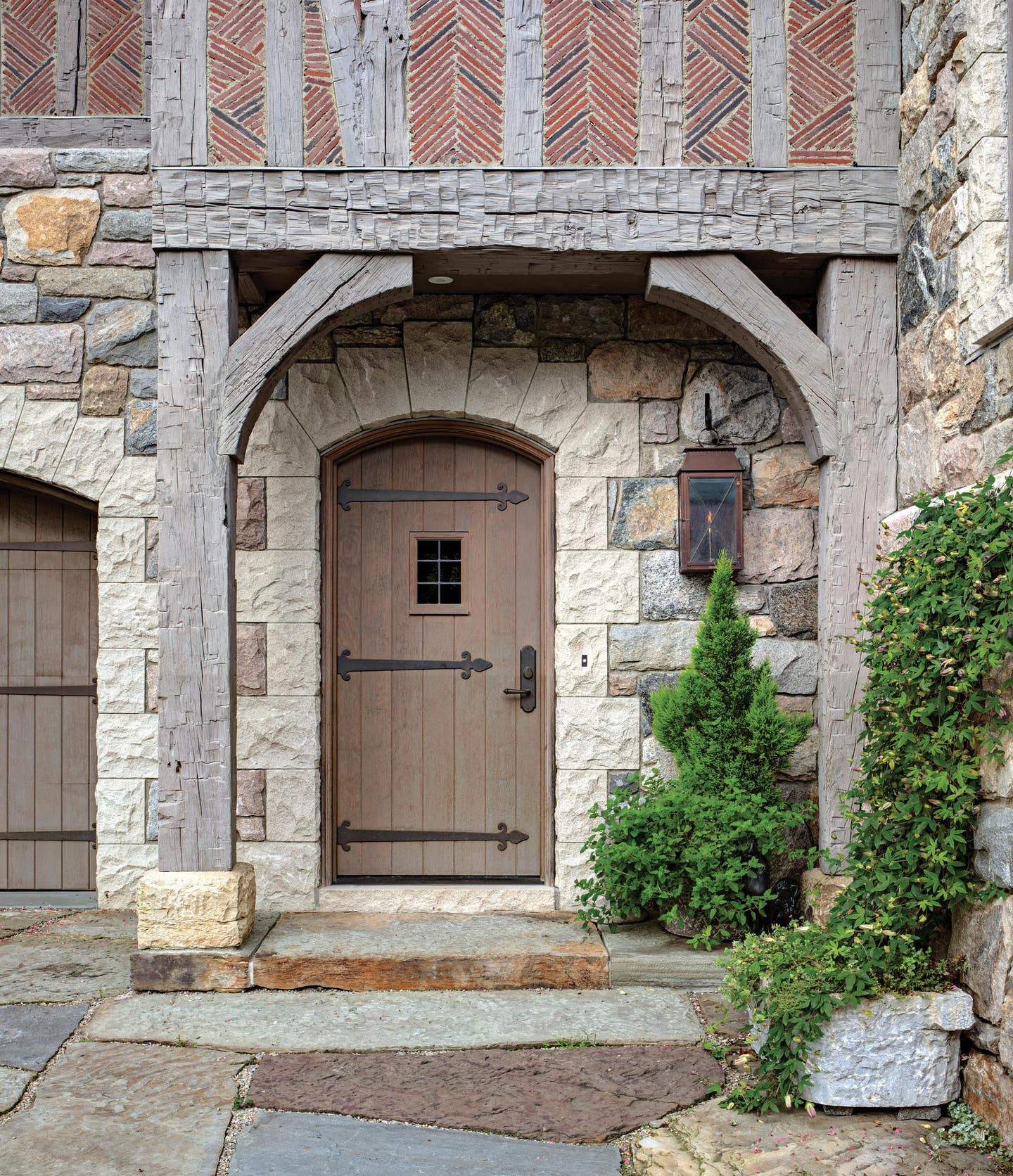
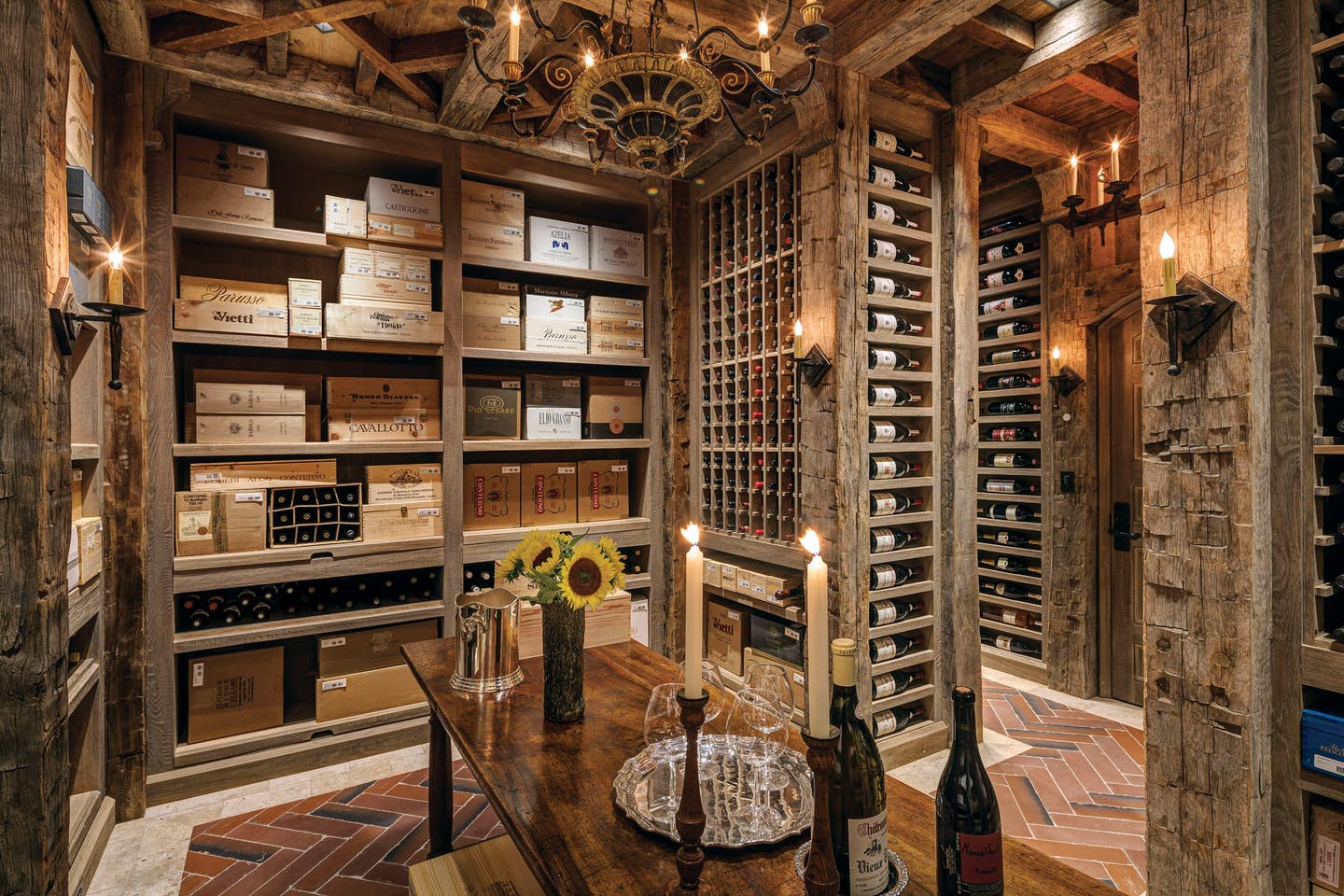
The French Normandy aesthetic continues inside where authentic materials were used more faithfully than on the exterior since weather factors weren’t a concern. The great room’s dramatic walk-in fireplace was a thoroughly transcontinental collaboration—the U.S.-based architectural team supplied drawings to a quarry team in France who cut, carved, and antiqued the surface texture of the French Camargue limestone pieces before shipping them to Greenwich. With its massive hearth and 30-foot height, the great room is the focal point of the home and sets its prevailing stylistic tone, overseen by designer Isabelle Vanneck. The soaring ceiling is composed of antique timber planks supported by a dramatic system of antique hand-finished timber trusses that replicate the old construction. Greenwich-based Stephen Gamble finished all the distressed stained wood, antiqued the casework, and skillfully applied the imported French plaster.
Adjacent to the great room, a 27-foot-long timbered arch announces the entryway to the kitchen, a near-professional grade work space where rustic period details like French Camargue limestone flooring and oak cabinetry set the stage for complementary elements like extra-large concrete countertops and other modern amenities. From top to bottom, the tower houses an office, the master bedroom, and a 250-square-foot wine cellar where several thousand bottles can be stored.
Hilton’s French Normandy manor house took shape on a trip abroad, so it’s apt that the architect refers to its detail- and labor-intensive execution, along with the other seven buildings on the property, this way: “It’s a journey I didn’t know I was going on when I started,” he says. “I’m definitely lucky!”
Classic Greenwich Houses
(As an Amazon Associate, we earn from qualifying purchases made through affiliate links.)
Charles Hilton is the founder of Charles Hilton Architects. For more than three decades, he’s practiced in Greenwich, Connecticut. Committed to designing imaginative buildings that inspire and delight, Hilton’s desire is to create humanistic architecture that embodies the aspirations of his clients. His new book, Classic Greenwich Houses, highlights his range in style, providing striking examples of Georgian, Colonial, and Shingle Style architecture.
Monacelli Press, Hardcover, 240 pages,
ISBN: 9781580935449, Published September 2020

